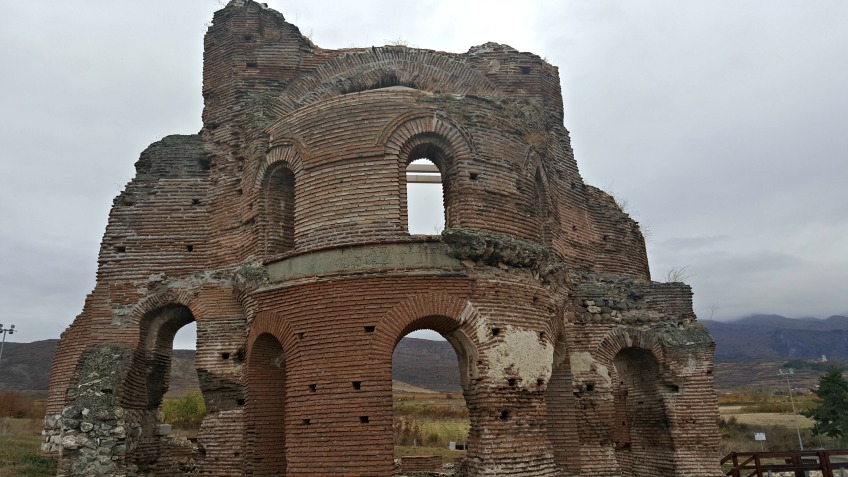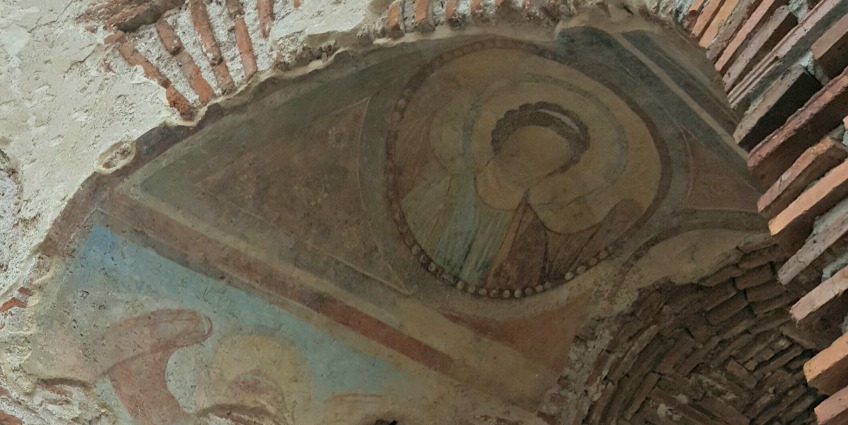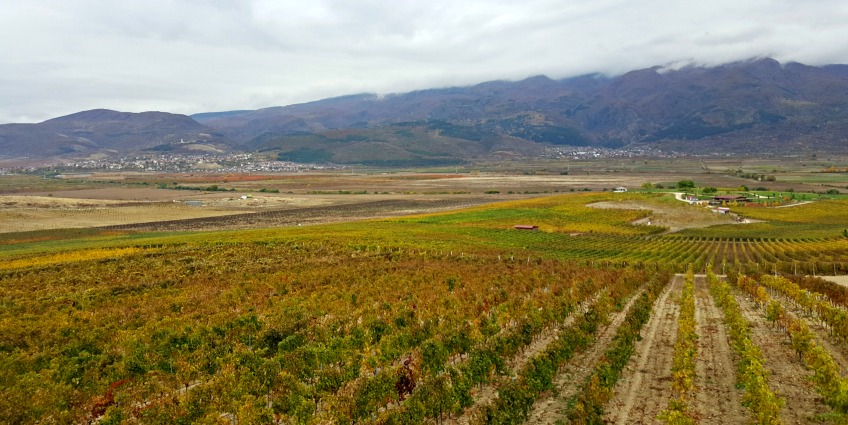There were no spittoons, just full glasses of generosity. As the dim light filtered through the cellar, the winemaker Dimitar delicately dipped the glass pipette into to French Oak barrel. He filled our glasses with the rich, golden liquid and our guide Vasil translated his sentiments. Both men stood proudly, waiting to see our immediate response to their oaked Chardonnay. “Nazdráve”, we toasted before tasting our third glass of the earthy Thracian Valley nectar and it was only 11.00am.
Generosity and pride sum up the atmosphere in the Thracian Valley wine region. Wine has been produced here since the 5th century BC with claims that the area is the birthplace of Dionysus, the ancient Greek god of wine. Back in the 1980’s communist Bulgaria was the world’s second largest wine producer but today the region has overcome its soviet hangover, by producing boutique wines competitive on the world stage. The Thracian Valley might be less popular than Melnik, the Bulgarian wine region Winston Churchill favoured but it is slowly becoming a wine lover’s paradise.
We met Vasil, our Bulgarian Wine Tour guide outside our hotel in Plovdiv. A young, well-dressed man, in a crisp white shirt and tie. He addressed us formally and we felt like privileged dignitaries. I immediately felt underdressed, in my warn-out boots and suitcase crinkled clothes. But before we knew it, we were cruising down the pot-holed highway in Vasil’s shiny new Peugeot. Formalities behind us, Vasil shared animated stories about growing up in Plovdiv and local wine legends. The view of crumbling communist blocks and tired warehouses made way for fertile soils and bare grapevines snaking endlessly through the autumn scented valley.
We pull in to Starata Izba – Parvenets (Old Cellar). Positioned at the foot of the Rhodope Mountains, this historic, vine-draped winery dates back to 1881. A stone-bricked labyrinth of mosaics, stained glass and cellars surrounded by a golden valley of vineyards. The stout winemaker, Dimitar welcomed us with a handshake. He spoke no English but his expertise didn’t need translating. We were slowly ushered around the cellars, tasting wines directly from the barrels and tanks as we go. I learned quickly that the rich Thracian Valley wine is not wasted or spat out, but sipped and savoured.
Starata Izba- Parvenets specialise in small batch barrel aged chardonnay and cabernet sauvignon. This style of wine isn’t normally my first choice but straight from the barrel it tasted refreshing yet toasted, like the Bulgarian pitka bread I had with breakfast. As we emerge back into daylight the winemaker points out the wineries library of vintage wines and I spy a dusty portrait of Georgi Dimitrov on the back wall. The only clue that this winery, like many in the region was once a communist cooperative.
The nearby Todorff Winery was also once a cooperative but was bought back descendants of the original owners in 2001. Significantly less characterful, this winery, hotel and spa has the air of all-inclusive package holiday. But this immediate sentiment halted, as our host lead as through their art-filled tasting rooms and presented us with a plate of Bulgarian cold-cut meats and cheeses. While indulging our stomachs, the five glasses in front of us were gradually filled with Tordoff’s rich and complex wines. It was here we were introduced to the Mavrud; the variety native to the Western Thrace region.

The guide described Mavrud as “wild, like the Bulgarians”. I was yet to see the wild side of the Bulgarian people, but the ruby wine tasted full-bodied and rich with the scent of wild blackberries and prunes. Vasil shared with us the legend of the Mavrud over a traditional Bulgarian lunch of grilled fish, shopska salad made from sheep’s cheese, cucumber, tomato and onion and a satisfyingly simple dessert of thick Greek yogurt with figs. The Mavrud story of warriors and powerful rulers seemed a long way from that dining room.
In our post-lunch slump, Vasil took us on a well-timed stroll to the ruins of the Red Church in Perushtitsa. An impressive Roman Christian Basilica dating back to the late 5th century. The Red Church is one of the earliest surviving Christian structures in the Roman empire after the recognition of Christianity as a religion. It is a rare example of early solid brick construction and the red colour of the bricks seemed to match our Mavrud stained teeth perfectly. Although the semi-dome structure and age are impressive, it is the haunting frescoes of saints and angels that struck me most.

In a mystic trance, we weaved through the concrete-clad mountain village of Unstina. On arrival to our final winery, Villa Yustina we were bundled into the winemaker 4×4. Her name was Krassimira. A tall, young woman dressed in a gillet and work boots who took on the road like a seasoned farmer. The 4×4 suspension bounces along the rough village streets and into the dusty paths of the autumnal vineyards. We trundle towards a wooden lookout, peaking atop the grapevines like a lighthouse.
As I reach the top of the lookout the view opened up across the Thracian Valley, the grey sky reflected in the hazy Rhodope Mountains and the scent of rain on the breeze. And just like spending an afternoon with friends, Krassimira shared stories of the concert hosted at Villa Yustina and a starry-eyed wedding proposals she had witnessed at the lookout. She explained that the most important day on the calendar is 14th February. Nothing to do with the romantic worship of St Valentine, but instead they celebrate St. Tryphon’s Day. St Tryphon being the patron of vine-growers, wine-producers and tavern-keepers, the celebration marking the beginning of the long cycle of processing the vines.

After a relaxing jaunt through the vineyard we got down to the business of wine tasting (with more cheese and meat to boot). By now my barely legible tasting notes were scribbled with “delicious” and “yum” which is completely accurate description of the wines we tasted. The 4 Seasons range of terroir wines from their own vineyard were world class and the spicy, black cherry “Winter: Cabernet Franc 2014” was a star. But it was the multi-award winning “Monogram: Mavrud & Rubin 2012” that stole my heart. The blend of two wild and native Bulgarian grape varieties is deep ruby in colour with notes of ripe fruits, chocolate and vanilla. I will forever remember Villa Yustina for producing such a rich and wild red.
The warmth and generosity of the Mavrud and Rodin wines is echoed in the experience we had wine tasting in the Thracian Valley. The region may not have grand chateaux like Bordeaux or have the volume of wineries as in the Barossa. But what it did have was welcoming winemakers, large measures of respectable wine and a passion for tradition, history and legends. After a day wine tasting Vasil drops us at Viniculture; a cosy wine bar in Plovdiv. A little tipsy, I order a large glass of the Thracian Valley’s best. On reflection, the winemakers have a lot to be proud of and I was very grateful that there were no spittoons after all.
Details: Plovdiv is Bulgaria’s second city, made up of a mixture of ancient roman ruins, revival architecture and a hip local art scene. It has been crowned as the “European Capital of Culture 2019”, so you want to go before everyone else does.
Get there: Ryanair flights to Plovdiv from London Stanstead Airport on Mondays, Wednesdays and Fridays from £41 Return
Stay at: The newly renovated 81/2 Art Guesthouse in Plovdiv from £60 a night with breakfast
Photo credits: Kirsty Boden